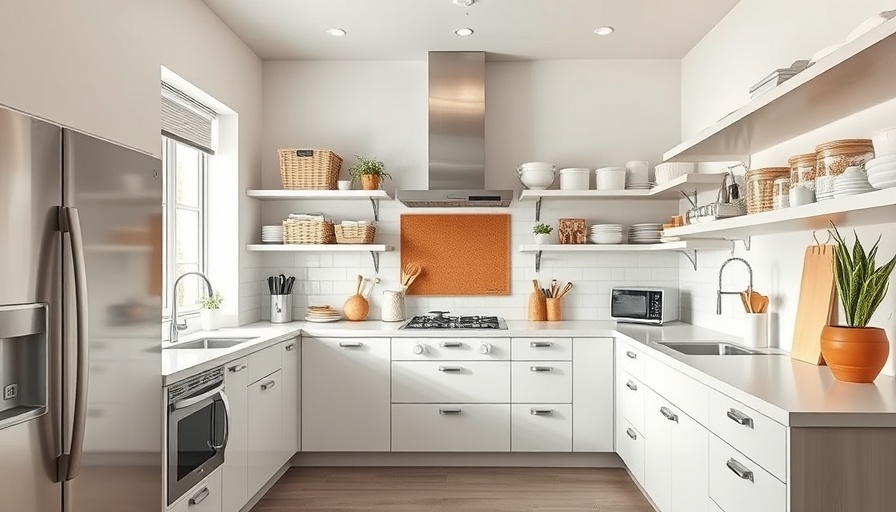
Transform Your Kitchen: Expert Tips for Clutter-Free Living
The kitchen, often referred to as the heart of a home, has a tendency to accumulate clutter. Whether it’s school papers, loose change, or essential kitchen tools, the chaos can quickly build and create a stressful environment. For homeowners in California looking to promote a cleaner, more tranquil kitchen space, these six expert tips are instrumental in not only decluttering but also enhancing the overall aesthetic and functionality of your kitchen.
1. Establish a Central Family Hub
Designer Mia Spencer emphasizes the kitchen's role as a family hub, where daily lives intersect. To combat surface clutter, she suggests incorporating a slim storage unit topped with a cork noticeboard. This dual-purpose piece allows families to keep essential items like the family calendar and school notes organized yet invisible from dining spaces. “You can’t see it from the dining table and don’t have to have bits on the fridge,” Spencer notes, revealing how such thoughtful design can harness functionality without sacrificing style.
2. Utilize Under-Bench Storage
Jo Llogarajah from Studio JKL highlights the importance of unconventionally using space to maximize storage. Incorporating under-bench drawers within a window seat can provide plenty of extra room for hidden storage. The depth of the window seat is key; Llogarajah suggests aiming for a comforting 20 to 22 inches of depth. This not only creates a cozy seating area but also maximizes your storage capabilities. By transforming what could be wasted space into a storage solution, the kitchen becomes effortlessly cleaner and more organized.
3. Embrace Vertical Space
In California homes where space can often be at a premium, utilizing vertical space is essential. Consider installing floating shelves or tall cabinets that draw the eye upward while offering ample storage options. Not only does this solution keep frequently used items within reach, but it also encourages a visually appealing vertical design element. These shelves can display decorative pieces, while keeping kitchen essentials tucked neatly away, striking a balance between form and function.
4. Design for Efficiency
When organizing a kitchen, efficiency should be a guiding principle. Utilize drawer dividers or pull-out racks within cabinets to create designated spaces for different categories of items. For example, grouping cooking utensils, baking supplies, and cutlery can streamline meal prep and reduce time spent searching for tools. As noted in reference articles, ensuring every item has a specific location can significantly reduce clutter and unnecessary stress.
5. Go for Multi-Functional Furniture
In smaller Californian homes, options that multitask can save both space and improve functionality. Look for tables that double as kitchen islands or stools with internal storage. These dual-purpose furnishings not only provide practicality but also enhance the cooking and dining experience by promoting an open, accessible environment. You’ll be amazed at how such small changes can lead to significant organization shifts!
6. Create a Capsule Kitchen
Lastly, consider the concept of a ‘capsule kitchen’—a minimalist approach to kitchen items. Evaluate which tools you use regularly and which ones gather dust. By limiting the number of appliances and utensils in your kitchen, you free up valuable counter space and reduce visual clutter. As many experts suggest, a minimalistic kitchen not only simplifies cooking but also impacts mental well-being positively.
Final Thoughts: The Importance of Clutter-Free Spaces
As households increasingly seek to improve their living spaces, fostering a sense of order in kitchens becomes imperative. The tips provided by design experts remind us that thoughtful organization can enhance functionality and arrest clutter. For Californians looking for clarity within their kitchen chaos, these strategies may very well be the key to achieving a serene cooking environment.
Whether you're beginning a kitchen renovation or seeking simple solutions for everyday organization, implementing these expert tips can transition your kitchen from chaotic to calm.
 Add Row
Add Row  Add
Add 




Write A Comment